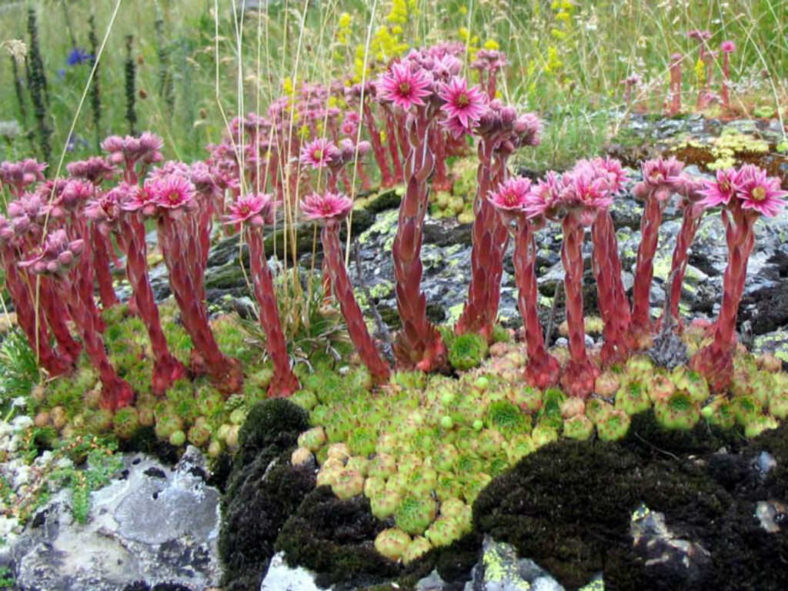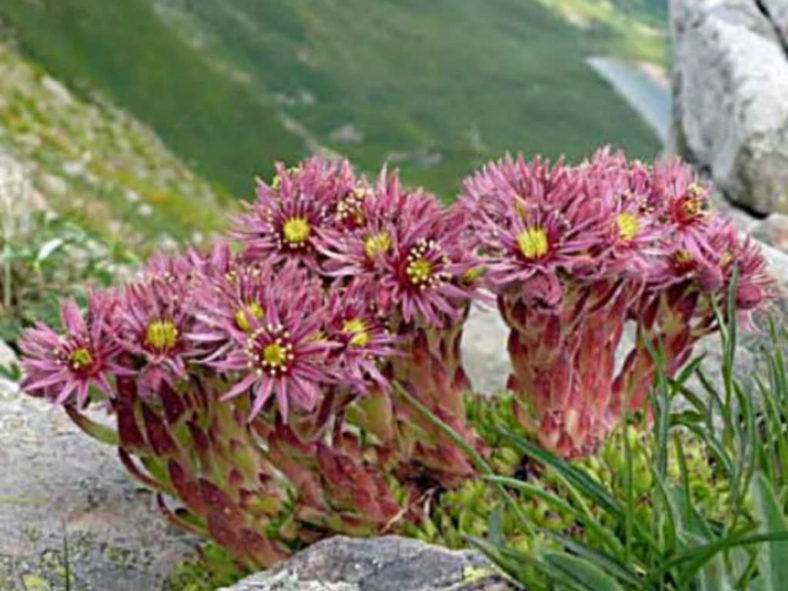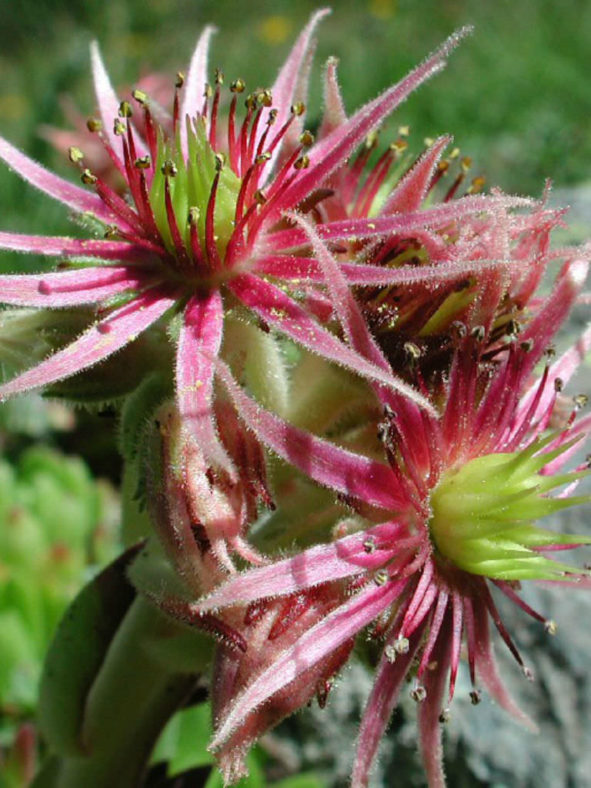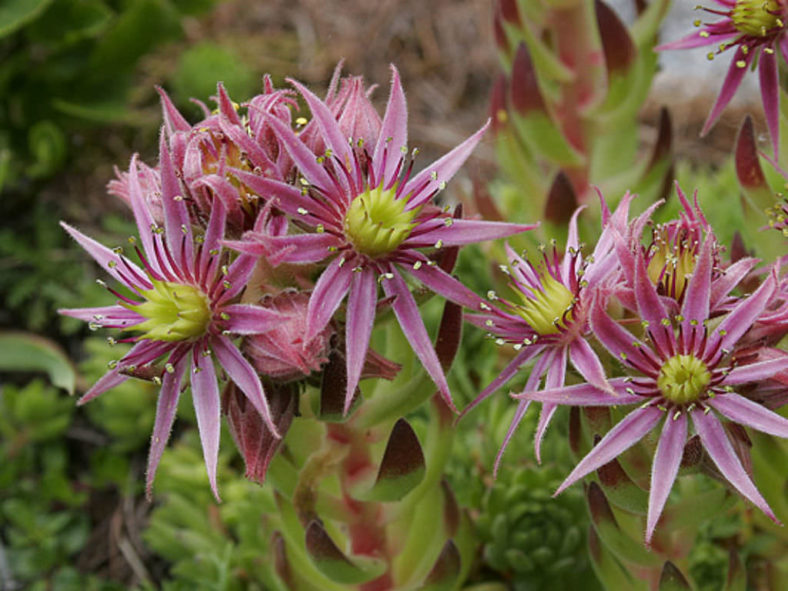Scientific Name
Sempervivum montanum L.
Common Name(s)
Anomalous Houseleek, Mountain Houseleek
Synonym(s)
Sedum montanum, Sempervivum tectorum subsp. montanum
Scientific Classification
Family: Crassulaceae
Subfamily: Sedoideae
Tribe: Sedeae
Subtribe: Sedinae
Genus: Sempervivum
Etymology
The specific epithet "montanum" (pronounced "MON-tah-num") means "of or pertaining to mountains" and refers to the native habitat of this species, which is in the mountainous regions of Europe.
Origin
Sempervivum montanum is native to the southern and central European mountains, from the Carpathians to the Pyrenees.
Description
Sempervivum montanum is a small, hardy succulent that forms a mat of tightly packed rosettes of green, densely hairy leaves. The rosettes can reach a diameter of 2.4 inches (6 cm) and produce many offsets on stolons that can grow up to 1.2 inches (3 cm) long. The leaves are thick, fleshy, lance-shaped, measuring up to 1.2 inches (3 cm) long and 0.12 inches (0.3 cm) wide.
In early summer, clusters of reddish-purple, star-shaped flowers rise on leafy stalks that can grow up to 8 inches (20 cm) tall. The flowers are star-shaped and can reach 1.6 inches (4 cm) in diameter.

Subspecies of Sempervivum montanum
- Sempervivum montanum subsp. burnatii
- Sempervivum montanum subsp. carpaticum (treated as a separate species Sempervivum carpaticum by some authors)
- Sempervivum montanum subsp. montanum
- Sempervivum montanum subsp. stiriacum
Cultivars and Hybrids of Sempervivum montanum
How to Grow and Care for Sempervivum montanum
Hardiness: USDA hardiness zones 4a to 10b: from -30°F (-34.4°C) to 40°F (4.4°C).
Sempervivums are not difficult to grow, provided they are not waterlogged and killed by excess watering. They can be easily grown outdoors and in containers, and they earned the name "Houseleeks" from their tendency to root on the roofs of houses. After the mother plant flowers, it will naturally die, but it has likely produced many offsets that will continue to grow by this time. These are excellent for cold windows. Sempervivum earned its popular name, "Hen and Chicks," from their growth habit. The mother plant, or hen, sends off numerous offsets, clustering around her base like chicks. These offsets can be easily repotted, or the plants can be left to form a clumping mat.
Repot as needed, preferably during the warm season. To repot a succulent, ensure the soil is dry before repotting, then gently remove the pot. Knock away the old soil from the roots, removing any rotted or dead roots. Treat any cuts with a fungicide. Place the plant in its new pot and backfill it with potting soil, spreading the roots as you repot. Leave the plant dry for a week or so, then begin to water lightly to reduce the risk of root rot.
Learn more at How to Grow and Care for Sempervivum.
Links
- Back to genus Sempervivum
- Succupedia: Browse succulents by Scientific Name, Common Name, Genus, Family, USDA Hardiness Zone, Origin, or cacti by Genus
Photo Gallery
Click on a photo to see a larger version.


